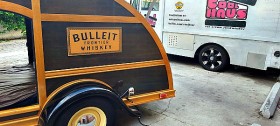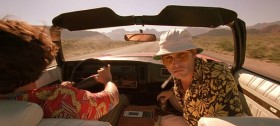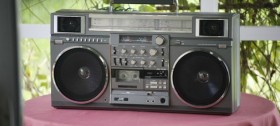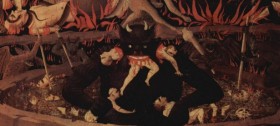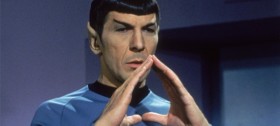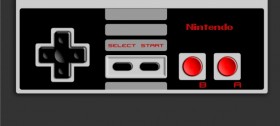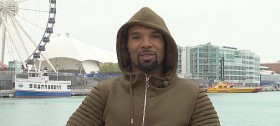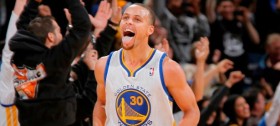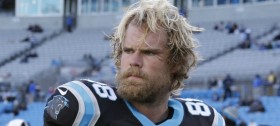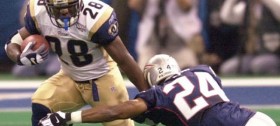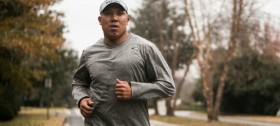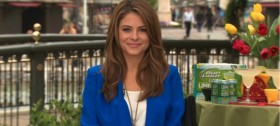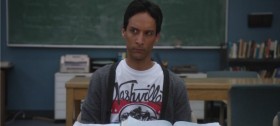Posts tagged Underwater archaeology

Interview with Underwater Archaeologist Fritz Hanselmann
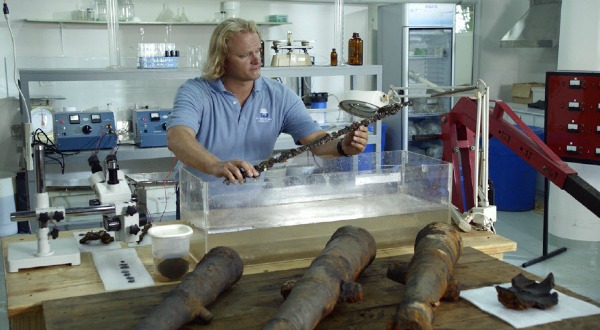
After the screening of The Unsinkable Henry Morgan, I had a chance to chat with super chill underwater archaeologist and all around good guy Fritz Hanselmann.
Hanselmann is really the star of the film. His voice drives it and his personality shines through. He’s the kinda guy you’d want to get drunk with as you listen to him educate you about pirate history. It’d probably be pretty sweet to scuba dive and recover sunken sea treasures with the dude as well. Here’s the conversation we had:
CS: So who discovered the cannons first?
FH: I did.
CS: You did. So you were there? How did you know where to look? You had to have gotten like a tip or something, right?
FH: We knew that he’d wrecked the ships in that general area on the reef, so we started looking in the reef. And that’s one of those spots where it’s like waves are crashing and you’re just kind of holding on. What we did was we run a line and we’d follow that and just do visual observation. We call it visual survey. We’re basically just observing what’s there. And then we make notes and we come back and we do illustrations and create a site map of anything we found. We found eight guns to start off and then when we went back in 2010, a couple of guns, the two smallest, were gone. We also noticed that there was a lot of disturbance to the site. They’d had a big storm come through and the two smallest guns, those ones you could lift with your hands. I’m presuming that they were rolled offsite during the storm because some of the other ones that were exposed were buried under rock that we found with the metal detectors later on. Still sort of in the same place but the site had changed.
CS: So how come you could only excavate in the summer?
FH: Well we teach the rest of the year so…
(Laughter)
FH: So it’s I do have a day job. This is just one of those things where the best time to go is typically July through September. So we try to go May/June so that it coincides with summer break and we can get some students involved and we can get some other people from different organizations and institutions to come and take part in the project.
CS: There has to be like a huge waitlist for students that wanted to get in on this shit, right?
FH: Oh, yeah. Oh, yeah. It was graduate students only and to be honest I think we had about four or five because this project wasn’t quite ready for field schools, which is what the students typically participate in to get that experience. So we had volunteer drivers, friends and colleagues of mine from the National Parks Service’s Submerged Resources Center, from NOA, Aquarius Reef Base, the Bureau of Safety and Environmental Enforcement, they have maritime archaeologists. So we had a number of people from different organizations and the Smithsonian Tropical Research Institute, which is part of the Smithsonian, they’ve got a base in Panama, helped provide some logistical backing as well, scuba tanks and whatnot. So I pulled a team from, basically friends and colleagues of mine that were top notch and raring to go. There was a waitlist among them, too.
(Laughter)
CS: How did you first get into the whole underwater archaeology thing?
FH: Man, that’s a good question. I grew up snorkeling and free diving in Florida where my grandparents live and I was in love with all things aquatic. I watched the Jacques Cousteau reruns, but I also love history so I would read biographies of Leif Ericson and Columbus and the explorers and the history of Mesoamerica and the conquest of the Americas by the Spanish. And what little kid doesn’t like pirates? I mean how many Pirates of the Caribbean movies do we need? It’s a good business model, everybody wants pirates.
(Laughter)
FH: I mean I even watched the old Errol Flynn movies when I was a kid.
CS: The Black Swan was featured in the film. I used to watch that a lot growing up.
FH: Yeah, exactly! See? It’s there and it’s fascinating and it’s something that people are interested in. And when I found out that there were like various possibilities that I could make a living doing it, I was like…
CS: Sign me up.
FH: Yeah! And here we are and it’s been amazing and I’m looking forward to more stuff in the future.
CS: So what’s the game plan for the upcoming summer?
FH: I’ve got a couple grad students who are interested in looking at the one shipwreck that we do have and so I’d like that to continue doing the study on that.
CS: But you’re going to move on to other potential –
 FH: Absolutely, man! We have, I talked about anomalies in the Q&A session, we have approximately a 150 targets and we’ve only been driving 20 to 22 of them. So there’s all kinds of stuff that we still need to check out and with all the movement of the sediment at the bottom, chances are they’re going to be completely buried. Until we actually start digging holes and testing to see what’s there, we won’t be able to know. It’s not like we can just go and see so that’s a disadvantage and it makes it harder to find. But the flipside is when you find it you have something that’s phenomenal, like that shipwreck where you’ve got an intact hull structure. I mean if you think about it, it’s a three-hundred-and-twenty some year old shipwreck and you’ve got the hull, you’ve got these wooden chests, and if it were exposed, you wouldn’t have half that stuff. So the fact that it’s buried, it creates an environment that’s anoxic. So oxygen can’t get to it, it can’t cause deterioration.
FH: Absolutely, man! We have, I talked about anomalies in the Q&A session, we have approximately a 150 targets and we’ve only been driving 20 to 22 of them. So there’s all kinds of stuff that we still need to check out and with all the movement of the sediment at the bottom, chances are they’re going to be completely buried. Until we actually start digging holes and testing to see what’s there, we won’t be able to know. It’s not like we can just go and see so that’s a disadvantage and it makes it harder to find. But the flipside is when you find it you have something that’s phenomenal, like that shipwreck where you’ve got an intact hull structure. I mean if you think about it, it’s a three-hundred-and-twenty some year old shipwreck and you’ve got the hull, you’ve got these wooden chests, and if it were exposed, you wouldn’t have half that stuff. So the fact that it’s buried, it creates an environment that’s anoxic. So oxygen can’t get to it, it can’t cause deterioration.
CS: And that also helps the wood.
FH: Exactly!
CS: And I know you mentioned the warm waters, is that an additional challenge because of the preservation factor?
FH: Yeah. For preservation of organic artifacts, especially in the case of shipwrecks, warm saltwater is the worst there is. And in addition, in the Caribbean, there’s an organism called Teredo navalis or Teredo worms. It’s basically a ship worm. It eats wood. So you’ll find these pieces of wood and you’ll see that worms have bored through the wood and that leads to further breakdown of the shipwreck. So if you take what you saw there and if you go up to the Baltic Sea by the Netherlands, you will find intact ships with masts upright, hole in the hull and it’s because it’s that cold that the wood doesn’t deteriorate. Same with the Great Lakes. You’ll find some phenomenal shipwrecks in the Great Lakes because it’s cold and it’s fresh.
CS: So how long does it take to uncover and recover four feet of sand?
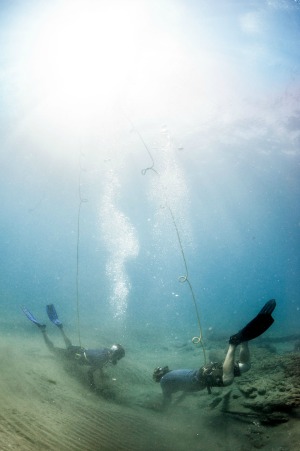 FH: Well once we’ve uncovered it…
FH: Well once we’ve uncovered it…
CS: You know what you’re doing at that point.
FH: Yeah, yeah. The trick is, that sediment has been there for almost a few hundred years, however long it took for that wreck to come into a state of equilibrium with the surrounding environment. So sometimes you have to work really hard just to get up some of that sand because you’ve got a mixture of sand with river sediment and river sediment’s more clay and so that makes it stickier and harder to get through. So that’s one of the difficulties but once you get that off, it becomes looser and when you go back to review it again…
CS: It’s a much easier job.
FH: Exactly! The first try is always the hardest because it’s been there forever and it’s compact and it’s more difficult.
CS: So in the film you had that moment where you talk about finding the cannon and you were kind of at a loss for words. Can you find some of those words for me?
FH: I think that was one of those moments where I think I even said to Michael, “You guys are going to use that, right?”
CS: “Fuuuck.”
(Laughter)
FH: Yeah, right? It’s breathtaking really because for me that’s what archaeology is all about. That’s what makes me be like “This is the coolest thing,“ because we’re not just reading about it, we’re touching it. We’re interacting with it. It’s like, you put your hand on that handle and it’s like “Holy crap! This was on Captain Morgan’s ship,” you know. What was it used for? And that to me is what archaeology is about; it’s about making history tangible. We’re really, literally interacting with the past.
CS: So what kind of classes do you teach on the regular? It can’t all be sunshine and Caribbean vacations.
FH: Well the trick is, my faculty position at Texas State is a research faculty position, so I’m not beholden to a certain course load. The tradeoff is that I don’t have a tenured position. So I teach courses in Scientific Diving, so training students in the basics of how to do science underwater, mapping, fish counts, transects, looking at shipwrecks, hull-based communications, surface of wide air. I think you saw in there at some points we didn’t have tanks on our backs.
CS: Yeah, I noticed that. It was just a big, long tube.
FH: Yeah, we had a unit on the surface that would pump air down the hose to the regulator in the hull and as long as there’s gas in the unit, you will dive for four hours. You’re not limited by the capacity of the tank. So all the different things that you can use in these different situations, you’ll learn about in the basics of scientific diving. I teach an Underwater Technology Techniques course. I also teach a graduate seminar on heritage management, so looking at how different countries, different organizations and institutions manage historical archaeological sites.
CS: It’s gotta vary across the board in terms of standards and regulations.
FH: Yea, it is. I look at it as more of a theoretical course and so we look at what makes them decide…why are they building this massive highway around Stonehenge? Not that they are, but what are the implications of doing so. What are the different implications of construction or whatever? Like do you open it up to the public? Do you allow people to go snorkel shipwrecks? And it’s not just shipwrecks it’s also looking at sites that are on land as well.
CS: So do you suspect then, I mean you didn’t find The Salvation, but was it likely one of the other ships that was wrecked during that whole Panama siege?
FH: I’m pretty certain that this wreck that we’re looking at is of the same time period, but I think it’s Spanish. Some of the chests,the tops of them were eroded away and you could see nails and mule shoes. Now the mule train was like the backbone of Panama, because the mule train would take the goods and the gold and the silver and all the stuff from the Pacific to the river to the mountains. The other route was across Panama City to Portobello. So that speaks to me that is was Spanish. Looking at the sword. And in doing some follow up archival research, I had a colleague of mine who’s a historian in Seville who did me a big favor. He looked up a few things for me, and there was a Spanish merchant ship that sank in 1681, ten years after Morgan, and it had a cargo of chests and mule shoes and stuff like that and who knows? Maybe it was inbound to help reconstruct the fort after Morgan thrashed it.
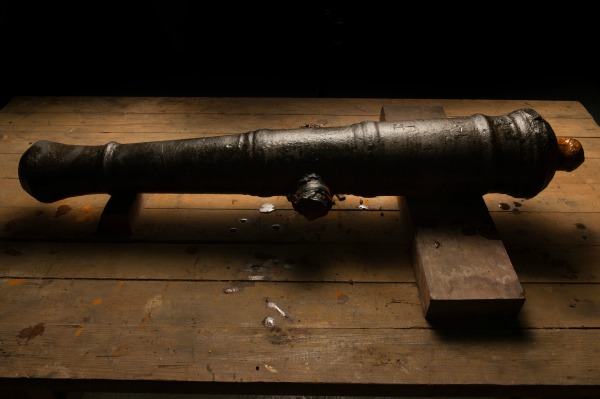
CS: But you’re still pretty confident that those are Morgan’s cannons?
FH: Oh, yeah. The distance between where we located the cannons and the shipwreck is roughly a kilometer. So they weren’t really on the wreck at all. The guns were on the reef and that’s why those smaller guns speak to the fact that some of those other anomalies could be really interesting. And this is a really bad place to dive, the swells are big. So you’ll be on the bottom and you’ll have a four or five foot swell. And it hurts your ears because you can’t go any deeper, but it’s increasing the pressure on you and after a while it starts to make you dizzy and of course it makes it harder for the guys topside to try and tend the line.
CS: Especially with the reef involved.
FH: Oh, yeah. And if you’ve trying to dig there, you need to have at least two, probably four anchor systems, so the boat doesn’t go everywhere and take you off the site. But yeah, the cannons were on the reefs themselves and they’re smaller which means they would’ve been on the upper decks. So if you hit, then they’ve fallen off. But the bigger guns probably would be with the wreck.
CS: Super buried.
FH: Yeah.
 CS: So were you stoked when Captain Morgan the brand, the rum company, got involved? Was that a fun thing? Like, oh yes, extra interest!
CS: So were you stoked when Captain Morgan the brand, the rum company, got involved? Was that a fun thing? Like, oh yes, extra interest!
FH: Yes, absolutely. Working with the Captain Morgan brand has been great because normally with grants and research funding that we look for, the process to get those funds is….
CS: There’s got to be a lot less red tape when you’re going straight to someone who sees the benefit of a marketing opportunity.
FH: Yes, exactly. Sometimes the process can be convoluted and sometimes it can be bureaucratic and the Captain Morgan brand is kind of like “Cool, this is awesome! We want in. How much can we give you?” and I’m like …
CS: “How much you got?”
FH: Exactly! So they’ve dialed it back a little bit but it’s been great. It’s been really great working with them and I look forward to doing stuff in the years to come.
CS: How long do you spend on something like this? Is this something that you spend all your summers on for the foreseeable future?
FH: Yeah, absolutely! What I’d like to do is have another two month field season and then look at making it like a month every year, where we come into the field, we’ve got all the equipment and we just dive in, work for four weeks, see what we can find and keep studying. As an example, there’s a shipwreck off the coast of Turkey and it’s like been 10 years of excavating. Of course they did a total land excavation. In this case, we’re probably not going to excavate the entire shipwreck.
CS: Someday?
FH: Maybe. If there’s money, yeah sure, but we have to be realistic. Like Tomas said in the film, Panama is hoping that this will be a long term project and so am I.
CS: That’s got to be good, having the government’s support.
FH: Absolutely. I mean they’re the ones who allow us to be in their country and allow us to work with their cultural heritage. And the trick is that we’re doing this as a public good, a public benefit. It’s just fun and we’re learning and everybody’s learning and the Captain Morgan brand helps to put that message out there and teach people more about underwater archaeology and the history of Panama. So really, it’s a win-win for everybody and Panama keeps its heritage and it’s not being sold off.
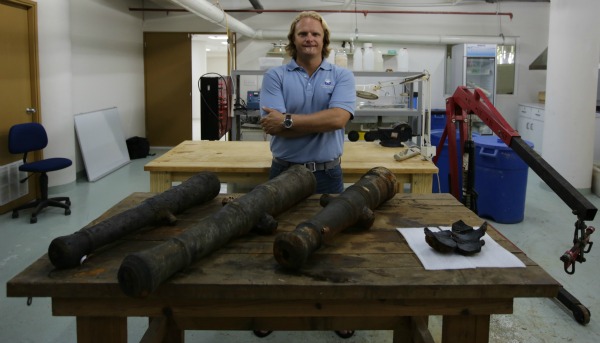
Jan 17th
